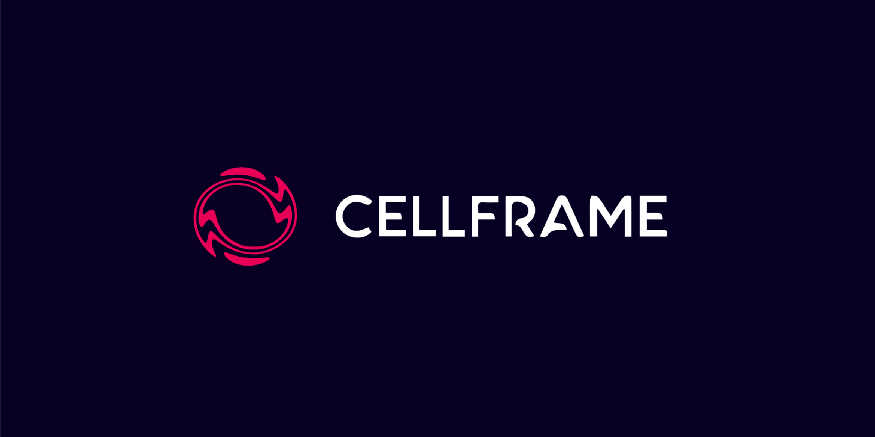Cellframe: The Multichain Future
Category: About

Interoperability and scalability will forge a better tomorrow for blockchain networks
Cryptocurrencies and distributed ledger technologies managed to grasp the global world’s attention even more than during the ICO-propelled mania a few years ago. While many coins experienced their new all-time-highs, it became evident that Ethereum, the underlying tech for the majority of projects in the crypto universe, limits the current state of progress due to enormous fees and scalability issues. Why should one worry if there are many alternative blockchains in existence? Indeed, there is a broad choice: it’s not hard to find a viable alternative, but the best option is not to rely on a single blockchain but instead to choose multichain interoperability.
The Gas Wars Debate
The ongoing trials of tech developers pretty much remind of the ancient myth with the “Sisyphean task” — nowadays, they are often stuck in unnecessary repetition cycles, going on and on in a circle of rebuilding apps and services for different incompatible platforms. The whole practice of the creation of specific software or its version for each operating system must have become a relic of the past years ago. Still, the tech spearheads continue to learn the intricate details of every base-layer network they choose to deploy code, and it brings unnecessary efforts and funds loss for them to build dApps. A less time-consuming approach is available: building each component only once and on a single chain, later linking the pieces together through the robust blockchain to create multichain applications.
The currently existing struggle among different blockchain is mainly caused due to insufficient offerings by Ethereum that layers the foundation of most existing projects. Sky-high Ethereum gas prices during the last few months made it utterly challenging for ERC-20 projects to run any microtransaction payments on the network. If the problem will not be solved soon, the worst scenario implies that it could devastate the whole idea of using Ethereum for one of its principal use cases.
Since gas fees are an integral part of Ethereum technology, many projects already have been looking to switch gears. The most popular and controversial digital asset — Tether — now works on many blockchains outside initial Ethereum, such as TRON, Solana, and Bitcoin’s Omni Layer, and continues the global advancement!
Viable alternatives are always present. Binance’s latest development, BSC, is a perfect example of an approach to embracing innovation and a solid market share in the commission-based gas wars. The BSC or Binance Smart Chain is one of the latest successful implementation examples that ignited the BNB token rise to new heights that have already made it the third-largest cryptocurrency, overcoming Tether and other altcoins. Since the start of 2021, BNB gained almost 500%, crushing the competition. Extremely high gas fees have created an opportunity for Ethereum competitors to outrace a market leader, taking out the world’s second-most valuable blockchain from the top.
Meanwhile, Matic Network or now known as Polygon announced its Multichain Approach to Ethereum scalability.
Simultaneously, some part of the DeFi users decided to flock to Flamingo (FLM) to escape high Ethereum gas fees — Flamingo’s (FLM) rallied to a new all-time high as well backed by record trading volume, increased governance capabilities, and DeFi users searching for Ethereum alternatives.
Next, Fantom (FTM) received a huge boost by offering cross-chain functionality with Ethereum, and data shows a more than 1,500% increase in FTM price from $0.025 on to a new high of $0.43 during a single month only!
The importance of multichain is supported by the top visionaries of DeFi such as Andre Cronje, the Yearn Finance protocol developer. Any more questions about the future of scalability?
Scale it up
What does the current situation indicate? The extensively high gas fees show that, without a doubt, most of the people are in crypto to make some quick buck mining which is still highly profitable despite the upcoming Eth2 upgrade.
The “Ethereum killers” place is still open since many platforms have failed to deliver a viable wide-adopted alternative by now. The DeFi hype is not infinite, and it will run out of steam at some point, so the mining fees will naturally decrease.
Scalability is one of the critical issues these days of hefty commissions, and solving these tasks will allow many users to enjoy better and smoother experiences. Still, it contributes even more to the developers who will produce apps and developments faster and easier.
We do not doubt that more and more cryptocurrency protocols will begin to strive for compatibility in the nearest future. It will soon be possible to use the capabilities of other blockchains in any ecosystem.
Cellframe is a platform for creating blockchain services, in which the problem of scalability is initially solved. To achieve high scalability, our team implemented sharding, but not in an ordinary conventional way. In Cellframe, the bandwidth bottleneck has been eliminated — the intermediate hub, commonly used in some blockchain platforms (for example, Polkadot) to exchange information between chains. Cellframe shards can interact autonomously in P2P mode, which ultimately increases the performance of the entire system. Additionally, we used the combination of Blockchain and DAG chains in each shard! Talking about the system’s security, our team took care of how Cellframe will work “tomorrow”, in the era of emerging quantum computers. It is the reason why we protected the system with variable quantum-resistant encryption. We believe in a better tomorrow of technology and make it happen.
. . .
Stay tuned for more info and follow us at:
Twitter: https://twitter.com/cellframenet
Telegram: https://t.me/cellframe
Website: https://cellframe.net/
Telegram ANN: https://t.me/CellframeANN
Recent news
-
The “Mirror Chains”: the solution for protection fintech products
10 Mar 2020
-
Introduction to Cellframe: blockchain services as an approach to building dApps
04 Mar 2020
-
What is Smart City?
30 Aug 2018
-
Smart Homes. The coming future
27 Aug 2018
